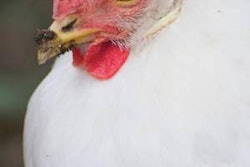New research from the University of Illinois at Urbana-Champaign aims to determine what makes “Bt corn,” which is engineered to produce the bacterial toxin, Bt, able to resist attacks by corn rootworm and able to boost corn yields.
Researchers Fred Below and Jason Haegele looked at the way Bt corn uses nitrogen in the soil. The study, published in Crop Science, found that Bt corn had higher yields and used nitrogen more efficiently than non-resistant corn.
According to Below, Bt corn has healthier and more active roots than corn rootworm without the resistance trait. “If you can protect the investment the plants made in the root system,” Below says, “you can realize everything that roots do like take up nutrients and water and provide anchorage.”
In their experiments, spanning two years, the resarchers grew resistant and and non-resistant crops and applied five different amounts of nitrogen. The resistant corn had higher yields than the non-resistant crops (nearly 21 bushels per acre) and more easily tolerated low nitrogen levels.
More efficient use of nitrogen in the soil would be especially beneficial in areas where nitrogen is lost through heavy precipitation or erosion. Additionally, Bt corn would fare better at current levels of nitrogen use in the United States.
“In 2010, the average nitrogen application rate for corn production was around 140 lb/acre,” say Haegele and Below. “Our study shows that the resistant strains we evaluated would have higher yields at that rate of nitrogen application.”
The healthy roots and efficient nutrient use of Bt corn could lead to changes in management practices that would further increase production, according to the study’s authors. Banded or placed fertility, a method by which a farmer can place fertilizer where the roots are likely to be, would be more effective when used on the robust root system. Additionally, increasing plant populations could further increase yield.
“When you have a higher population of plants, each individual plant has a smaller root system, so that made it difficult to increase plant population when you had insects chewing on the roots,” explains Below. “With the Bt corn, though, you can protect the root system and grow more plants.”
In addition to its utility in crop production, Below is hopeful that Bt corn will open up new avenues of research as scientists begin to better understand root systems. “Plant roots are below ground and are hard to study. It’s a big, unexplored horizon, both in agronomics and crop biology. I think that’s why the trait is of such value.”


















